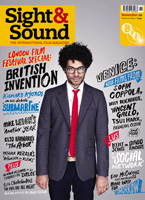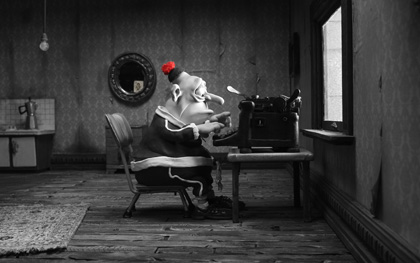Primary navigation

Australia 2008

Reviewed by Mark Fisher
Our synopses give away the plot in full, including surprise twists.
Melbourne and New York, 1976. Looking for a friend, lonely child Mary Daisy Dinkle chooses Max Jerry Horovitz’s name at random from a New York telephone directory. She writes him a letter, telling of her difficulties with her parents and with bullying. Horovitz is confused but replies to her, and the two form a friendship based in part on a shared love of an animated television show and chocolate. We subsequently learn that Horovitz has Asperger’s syndrome, and Mary’s letters often prompt explosive and uncontrollable emotions in him, which at their worst lead to him being committed to a psychiatric institution.
Mary, grown up, marries her neighbour and writes a study of Max’s condition for her university dissertation, which is later turned into a book. She excitedly plans to travel to New York to meet Max. Just as she is about to leave, she receives a letter from Max saying that he was enraged and confused by her revelations in the book. This causes Mary to sink into a deep depression, leading to an attempted suicide. She is rescued by an agoraphobic neighbour who miraculously overcomes his condition. Max forgives Mary. When she goes to New York to meet him, he has died.
Mary and Max is a claymation film that is as much of an oddball as its two central characters. Mary Daisy Dinkle is a lonely child in Melbourne who, looking for a friend, selects the name of Max Jerry Horovitz from a New York telephone directory and writes to him. Horovitz is in one sense an excellent choice – middle-aged, obese and, as he later finds out, suffering from Asperger’s syndrome, he is as lonely as she is. Yet in another sense the friendship between the two is disastrous for them both. They are each the only imaginable friend for the other, but for that very reason they blight each other’s life as much as they enhance it.
Writer-director Adam Elliot (who made the Oscar-winning short Harvie Krumpet) upsets audience expectations about claymation and what a film about friendship should be. Mary and Max is not ‘life-affirming’ in a predictable Hollywood way. At the beginning of the film, we may expect the two oddballs to come together ‘against all the odds’ and help each other to escape their isolation, before going on to be highly successful. But when Mary, as an adult, does become successful, turning a case study of Max’s condition into the basis of first a university dissertation, then a book, this nearly ruins their friendship, not to mention both their lives. The horrified Max is driven into a desperate rage, prompting Mary to pulp the book and sink into a despair that culminates in a suicide attempt.
But if Mary and Max isn’t upbeat in a facile way, neither is it bleakly depressing. The presence of Philip Seymour Hoffman as the voice of Max is not the only aspect of the film to make it recall the work of Todd Solondz – Elliot draws comedy from grimness in the same way that Solondz does. His sombre-coloured claymation (all browns and greys) creates a world of dysfunction, disorder and brutality, but even at its darkest moments his film is suffused with a mordant comedy.
The fact that the film starts in the 1970s and is made up mostly of written correspondence gives it a deliberately archaic temporal rhythm. Letters take over a week to arrive, and Mary and Max’s anxious anticipations, slowly dawning disillusionments and moments of unexpected elation unfold at much the same pace as the epistolary romances of characters in a 19th-century novel. In the age of instantaneous communication made possible by the internet, Mary and Max’s friendship would have developed at a very different speed, if it could have developed at all. Max’s disorder, Asperger’s syndrome, also marks a distance from the communicational matrix of 21st-century media culture. Asperger’s is a failure of emotional literacy, a problem that’s all the more estranging in today’s culture of intense emotionalism, with its constant demands that we say what we feel.
Ultimately, Mary and Max is about correspondence and lack of correspondence, about how our images and fantasies about others fail to match up to what they are like, and about the constitutive gaps and misfirings in any communicational practice. One audience expectation that is thwarted is our feeling that Mary and Max must eventually meet face to face. They never do; the time is always wrong. Yet, for better and very often for worse, the friendship, the correspondence between them, depends on this wrong timing, depends on a fundamental wrongness that can’t be fixed.
Happiness reviewed by Xan Brooks (April 1999)
Palindromes reviewed by Michael Brooke (May 2005)
An animated crowd: Isabella Kaminski reports on the forward-thinking Annecy Animation Festival (July 2010)
Me and Joseph Brodsky: Nick Bradshaw talks to Russian animator Andrey Khrzhanovsky about his Joseph Brodsky memoir Room and a Half (online, May 2010)
Best of herd: Nick Bradshaw previews the 2010 British Animation Awards (online, February 2010)
Animation: timeline from trick effects to CGI (August 2006)